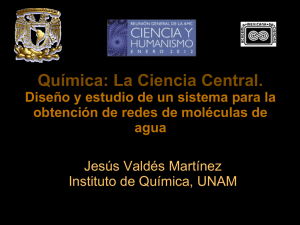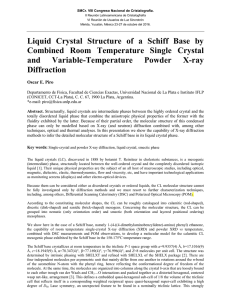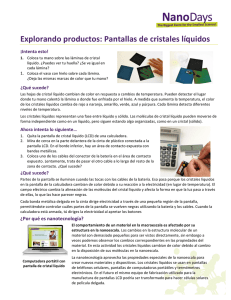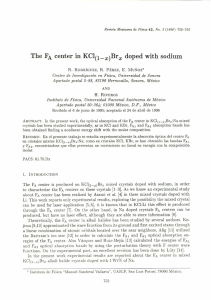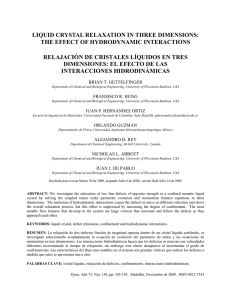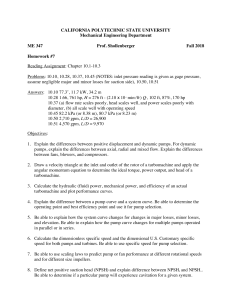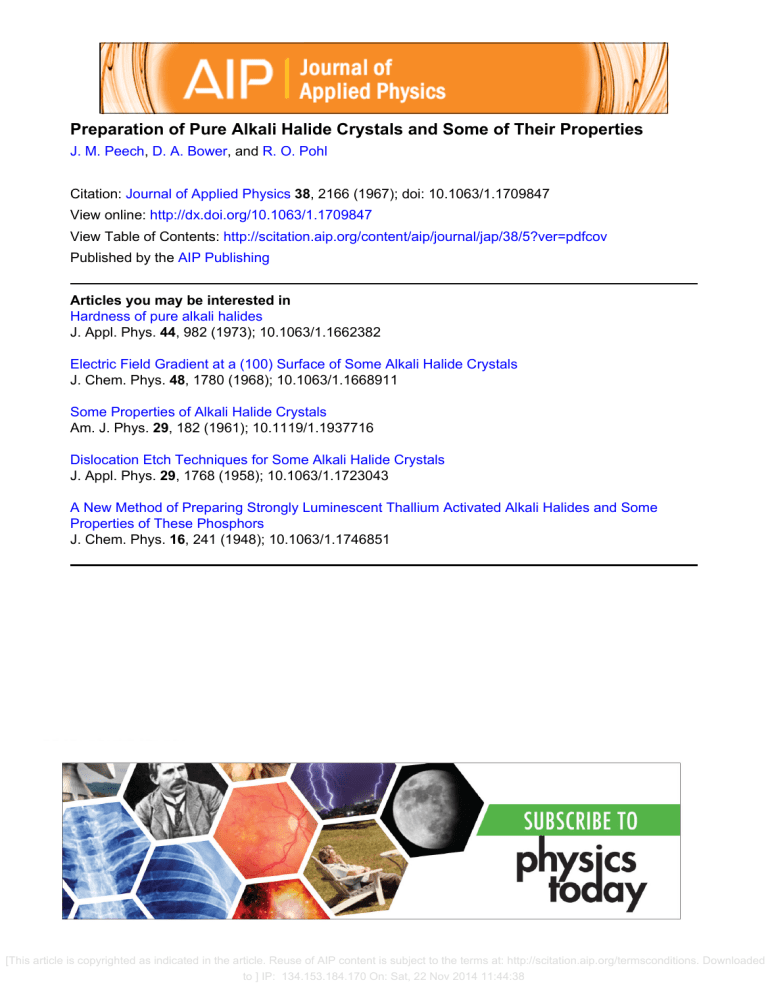
Preparation of Pure Alkali Halide Crystals and Some of Their Properties
J. M. Peech, D. A. Bower, and R. O. Pohl
Citation: Journal of Applied Physics 38, 2166 (1967); doi: 10.1063/1.1709847
View online: http://dx.doi.org/10.1063/1.1709847
View Table of Contents: http://scitation.aip.org/content/aip/journal/jap/38/5?ver=pdfcov
Published by the AIP Publishing
Articles you may be interested in
Hardness of pure alkali halides
J. Appl. Phys. 44, 982 (1973); 10.1063/1.1662382
Electric Field Gradient at a (100) Surface of Some Alkali Halide Crystals
J. Chem. Phys. 48, 1780 (1968); 10.1063/1.1668911
Some Properties of Alkali Halide Crystals
Am. J. Phys. 29, 182 (1961); 10.1119/1.1937716
Dislocation Etch Techniques for Some Alkali Halide Crystals
J. Appl. Phys. 29, 1768 (1958); 10.1063/1.1723043
A New Method of Preparing Strongly Luminescent Thallium Activated Alkali Halides and Some
Properties of These Phosphors
J. Chem. Phys. 16, 241 (1948); 10.1063/1.1746851
[This article is copyrighted as indicated in the article. Reuse of AIP content is subject to the terms at: http://scitation.aip.org/termsconditions. Downloaded
to ] IP: 134.153.184.170 On: Sat, 22 Nov 2014 11:44:38
2166
H. SOBOL AND
A. L.
EICHENBAUM
of several hundred volts. His experiments were performed with a system where (:J near the exit aperture
was much lower than in the bulk of the cathode.
Electron extraction from a low (:J region took place and
the bulk of the plasma was used only as a transport
media to the aperture vicinity. The extraction is in an
almost ion-free region and nearly follows a! law. The
experimental results therefore cannot be explained by
the present theory. A model wherein (:J is variable is
necessary for this case.
tions has been presented. Extracted current as a function of extractor potential has been computed. The
theory, when applied to the separate emitter cathode,
gives results that agree fairly well with experiments.
More definitive experiments must be carried out with
the CE cathode to determine the values of {3 and T
accurately and additional theoretical work is needed to
explain the case for the variable {3.
IV. CONCLUSIONS
The authors are pleased to acknowledge the work of
C. B. Davis in programming the equations for potential
distribution. The assistance of L. Seministow in performing the experiments is gratefully acknowledged.
Current extraction from plasma cathodes has been
treated theoretically by space-charge analyses. Stability
data for simple space-charge mode potential distribu-
ACKNOWLEDGMENTS
VOLUME 38, NUMBER 5
JOURNAL OF APPLIED PHYSICS
APRIL 1967
Preparation of Pure Alkali Halide Crystals and Some of Their Properties*
J. M. PEECH,t D. A. BOWER, AND R. O. POHL
Laboratory of Atomic and Solid State Physics, Cornell University, Ithaca, N(!"/J.J York
(Received 17 October 1966)
This paper describes some of the techniques that have been used successfully in this laboratory for the
purification and preparation of a number of alkali halide crystals, particularly KCl. Measurements of the
optical absorption, ionic conductivity, and thermal conductivity, are employed to test the purity of the
crystals. Surface contamination of the zone-refined salt upon exposure to air, during handling between the
different steps of preparation, appears to be a major source of contamination as judged by the ionic conductivity. A special apparatus has, therefore, been designed to permit both zone refining and subsequent seed
pulling of the crystal to be carried out without changing the protective atmosphere.
I. INTRODUCTION
ITH increasing sophistication of the experimental
studies on the physical properties of crystalline
solids, the demand for large single crystals of greater
chemical and physical perfection and better controlled
doping has grown markedly over the years. This paper
summarizes some of the work carried out at Cornell
University on the preparation of alkali halide crystals.
Because alkali halides are relatively soft, we have
found that alkali halide crystals grown by the Kyropoulos seed-pulling method showed considerably fewer
dislocations and small-angle grain boundaries than
crystals grown by gradient methods, unless extremely
large containers were used for the latter technique.
We have, therefore, utilized the seed-pulling technique
and describe here two types of furnaces that we have
used in this work.
W
* This work was supported by the U.S. Atomic Energy Commission and the Advanced Research Projects Agency.
t Present address: Division of Engineering and Applied Physics,
Pierce Hall, Harvard University, Cambridge, Massachusetts.
Of the various methods used to purify the alkali
halide salt prior to crystal growing in these furnaces,
we have found two to be particularly effective. The
first method consists of treating the alkali halide under
its halogen gas and has been used for the chlorides and
bromides and, with somewhat less success, for the
iodides, either below or above the melting point of the
alkali halides. This method has been found very effective for the removal of oxygen-containing impurities,l,2
which are frequent contaminants. The second method
is zone refining, which we have used for KCI.
During the last four years, several investigators2- S
have advocated the use of zone refining as a method
for the preparation of some high-purity alkali halides,
notably KCI, which are especially low in multivalent
M. V. Klein, Phys. Rev. 122, 1393 (1961).
T. M. Strinivasan and W. D. Compton, Phys. Rev. 137,
A264 (1965).
3 H. Griindig, Z. Physik 158, 577 (1960); Z. Physik 182, 477
(1965) .
4 H. Kanzaki, K. Kido, and T. Ninomiya, J. Appl. Phys. 33,
482 (1962).
• H. Griindig and E. Wassermann, Z. Physik 176, 293 (1963).
6 R. W. Warren, Rev. Sci. lnstr. 36, 731 (1965).
1
2
[This article is copyrighted as indicated in the article. Reuse of AIP content is subject to the terms at: http://scitation.aip.org/termsconditions. Downloaded
to ] IP: 134.153.184.170 On: Sat, 22 Nov 2014 11:44:38
PRE PAR A T ION AND PRO PER TIE S 0 F PUR E A L K A L I HAL IDE CRY S TAL S
ion impurities. Typically, these authors have studied
the properties of single crystals of zone-refined KCI
that were cleaved from local singular regions of the
zone refined ingots. This Bridgman-like growth of these
crystals is, however, a random process, influenced at
least by the surface irregularities of the sides of the
boat or the tube containing the salt, so that much of
the zone-refined ingot is usually polycrystalline. Single
crystals, obtained from zone-refined ingots, therefore,
seldom exceed 2 cm in any dimension and usually
exhibit many small-angle grain boundaries. To overcome these limitations, we have seed-pulled crystals
from zone-refined material using several different methods. It soon became apparent that exposure of the salt
to air during transfer of the salt from the zone-refining
apparatL's to the crystal growing furnace resulted in
serious ~ urface contamination of the salt. This led to
develcpment of a special apparatus in which zone
r . fining and subsequent crystal growing could be carried
out without changing the protective atmosphere. This
paper describes, in some detail, the apparatus that has
been used in this laboratory for the purification and
preparation of alkali halide crystals and presents the
results obtained with KCl.
II. DESCRIPTION OF THE APPARATUS
For seed pulling under an inert-gas protective atmosphere, furnaces of rather conventional design have
been used? A large stainless steel cylindrical highvacuum chamber, completely water-cooled and fitted
with a quartz observation window, contains both the
graphite heating element and the molten salt in a
crucible. It has been found necessary to heat the
supposedly spectroscopically pure-graphite8 heating element alternately in vacuum and in chlorine gas at
1400°C before use in the crystal growing furnace. The
same Cb treatment is given to the pyrolytic graphite
crucibles.9 The seed crystal is fused with a 02-H2
torch to a heavy platinum wire, which is clamped to
the watercooled stainless steel pulling rod. The pulling
rod is rotated at about 1 rpm while it is raised at the
rate of about 2.5 cm per hour. Another small crystal is
secured to a second stainless steel rod which can be
manipulated from the outside in such a manner as to
reach all parts of the surface of the melt. This "dipping
rod" is used for the removal of specks of graphite,
floating on top of the melt, which may have entered
the salt during prior purification processes.
Under the protective atmosphere of high-purity
argon gas,lO which had been further cleaned by a
7 Shop drawing may be obtained upon request from the Non·
Metal Crystal Growth Facility of the Materials Science Center
at Cornell University.
8 Graphite was obtained from Ultra Carbon Crop.
g Pyrolytic graphite crucibles were obtained from High Temperature Materials, Inc.
10 Argon was obtained from Matheson Co. Typical mass spectroscopic analysis of this gas gave: C02<1 ppm, O2<5 ppm, H2<1
ppm, CO<l ppm, N 2 <5 ppm, CH.<2 ppm, H20<5 ppm.
2167
2"
IT-··--·ft"":...,....,..~
1.500~
IT
,i
MAIN TEFL.ON BODY
1.125-
ljl~ ~,~.~'~~~~~~~~~
5 PIECE TEFLON
GASKET ASSEMBLY
TEFLON PLUG
FIG. 1. Halogen-resistant high-vacuum seal mounted in
Teflon plug.
number of techniques,!! the crystals grown in the stainless steel furnace described above were always found to
exhibit ultraviolet absorption bands in the region of
200 mJL with peak absorption constants of 0.1 to 0.5
cm-!. Assuming that this band is caused by OH- present
in the crystals, this absorption corresponds!2 to a
number density of OH- between 0.3X 1016 and 1.5X 1016
cm-3 • This ultraviolet absorption can be decreased by
at least a factor of 10 if the crystals are grown in a
furnace under a protective atmosphere containing their
respective halogen gas.
Such a furnace was first conceived by H. Kappel in
this laboratory. It consists of a vertical flat-bottomed
quartz tube, 5 to 7 cm in diam and 50 cm long which
contains the crucible. The lower end of the ~ube is
inserted into a wirewound heating element. To achieve
the desired temperature distribution in the crucible
a 2-cm hole is drilled in the bottom of the heatin~
element and a metal rod is inserted as a "heat sink"
for the bottom of the crucible. The seed crystal is
fastened to the water-cooled quartz pulling rod by
means of a graphite chuck which, in turn, is attached to
the rod with a snug push fit.13 The protective atmosphere used in this furnace consists of about 0.2 atm of
C12 and 0.8 atm of Ar. The use of a higher partial
pressure of C12 results in the formation and entrapment
of gas bubbles in the boule.
The technical innovation of this design is a halogen
resistant high-vacuum seal for the quartz pulling rod.
It consists of a Teflon Wilson seal mounted in a Teflon
plug which is, in turn, vacuum-sealed with a flange to
the top of the quartz tube. The Teflon plug containing
this seal is shown in Fig. 1.
The two procedures used for purification of the salt
i.e., halogen treatment and zone refining, have bee~
II We presently pass the argon through a TiZr filter at 700°C
and then through activated charcoal at -80°C.
12 C. K. Chau, M. V. Klein, and B. Wedding, Phys. Rev. Letters17,521 (1965); and B. Fritz, F. Luty, andJ. Anger Z. Physik
174,240 (1963).
'
13 It has recently been found possible to fuse the seed crystal
directly onto the pulling rod with a OrH2 torch since KCI
"
containing OR-, wets quartz.
[This article is copyrighted as indicated in the article. Reuse of AIP content is subject to the terms at: http://scitation.aip.org/termsconditions. Downloaded
to ] IP: 134.153.184.170 On: Sat, 22 Nov 2014 11:44:38
2168
PEECR, BOWER, AND
,(,' j'
/
.'
.r~
/
~.)
PORL
in Fig. 2. An additional furnace (not shown in the
figures), which extends over the full length of the boat
as well as the T section of the outer tube, is placed
around the outer tube and is heated to 700°C first
under Cb and then under vacuum. A fresh atmosphere
of Cb is then added (while the furnace is at 500°C)
and the temperature of the furnace is increased to
900°C to melt the salt in the boat. This additional
furnace is then removed, and the zone refining is
commenced. The Cl2 atmosphere is exchanged for a
Cb-Ar mixture after 10 passes, after which 40 more
passes are made under the same protective atmosphere
that is to be used in growing the crystal.
III. EXPERIMENTAL RESULTS
FIG. 2. Schematic drawing of the combined apparatus for zone
refining and seed pulling under halogen atmosphere. The above
configuration of the apparatus is for zone refining. The numbered
components of the apparatus are: (1) mechanical drive for the
zone-refining heater, (2) outer quartz tube, (3) inner quartz
tube containing the boat, (4) pyrolytic graphite boat, (5)
quartz rod for pulling the boat, (6) inner quartz liner, (7) flange
for Teflon plug, (8) Teflon plug with Wilson seal, (9) pumping
line, (10) mobile heater for zone refining, (11) seed crystal,
(12) graphite chuck, (13) 50/60 quartz inner ground joint,
(14) 50/60 Pyrex outer ground joint, (15) Teflon plug with Wilson
seal, (16) quartz seed pulling rod, (17) tower for the pullingrod mechanical drive.
described sufficiently elsewhere2- 4 and will not be repeated here.
In the present work, it has been found desirable to
perform the zone refining and the subsequent seed
pulling in a single apparatus without changing the
atmosphere. Such an apparatus is shown in Figs. 2
and 3. In Fig. 2, a 20-in.-Iong pyrolytic graphite boat
(4) is positioned for the zone refining inside an inner
quartz tube (3) which protects the outer quartz tube
(2) against KCI spillage. In this configuration, the
inner quartz liner (6) (not to be confused with the
inner quartz tube) collects the evaporated salt, during
zone refining, which would otherwise condense on the
walls of the outer tube as well as on the seed crystal
(11) in the chuck (12). After completion of the zone
refining, the boat inside the inner quartz tube (3) and
the liner (6) are pulled by a quartz rod (5) to the "T"
region of the outer tube so as to position the clean end
of the ingot directly below the seed-crystal pulling rod
(16) as shown in Fig. 3. In this position, the ingot is
remelted by means of a U-shaped furnace (22), with a
heat sink at the bottom, which surrounds the outer
tube. Both the quartz rod (15) and the pulling rod
(16) are brought through a vacuum seal in a Teflon
plug as shown in Fig. 1. This part of the apparatus thus
closely resembles the quartz furnace described above.
Prior to zone refining, the graphite chuck (13), the
boa t (4), the inner quartz tube (3) and the quartz
liner (6) are Cl2 treated at lO00°C. The boat is then
filled with KCI, pretreated by bubbling Cb through the
molten salt, and is placed inside the inner quartz tube
which is positioned in the outer quartz tube as shown
A. Ionic Conductivity
With the exception of KCI crystals cleaved directly
from zone-refined ingots, we found that virtually all
crystals, including commercial crystals, displayed an
extrinsic ionic conductivity at 250°C in the range indicated by the vertical bar in Fig. 4. In particular, curve
Q11 was obtained from a crystal pulled under Cb from
untreated commercial salt in the quartz furnace. Similar
results were obtained for crystals pulled in the stainless
steel furnace. Curve OR gives the ionic conductivity
for high-purity KCI prepared by Butler and co-workersl4
at the Oak Ridge National Laboratory. This KCI
crystal was pulled from salt which was purified chemically but which was not zone refined.
Curve Z is typical of the ionic conductivity of crystals
that have been cleaved directly from zone-refined ingots.
FIG. 3. Schematic drawing of the apparatus illustrated in
Fig. 2 except that the configuration shown here is for crystal
growing. The numbered components of the apparatus that are
not already described in Fig. 2 are: (18) stainless steel capillary
attached to cooling water source, (19) platinum pin for securing
chuck on pulling rod, (20) molten salt of clean end of ingot, (21)
zone-refined ingot which is not remelted, (22) U-shaped heater
for remelting clean end of ingot.
14 C. T. Butler, J. R. Russell, R. B. Quincy, Jr., and D. E.
LaValle, J. Chern. Phys. 45, 968 (1966).
[This article is copyrighted as indicated in the article. Reuse of AIP content is subject to the terms at: http://scitation.aip.org/termsconditions. Downloaded
to ] IP: 134.153.184.170 On: Sat, 22 Nov 2014 11:44:38
PRE PAR A T ION AND PRO PER TIE S 0 F PUR E A L K A L I HAL IDE CRY S TAL S
It had been hoped that crystals pulled from such zonerefined salts would also have a low ionic conductivity.
This, however, was not true. Curve ZK represents the
ionic conductivity of crystals grown from zone-refined
salt in either stainless steel or quartz furnace. The
ionic conductivity of these crystals was in all cases no
better than that measured for crystals grown from
commercial salt. This is in agreement with the results
of Grtindig. 5 The ionic conductivity of his zone-refined
ingot was virtually identical to that shown by our
curve Z. Curve G2 is the conductivity of crystals regrown by Grtindig from his zone-refined KCl using the
Bridgman technique.
The following three experiments show that the drastic
deterioration of the quality of the regrown crystals was
caused by surface impurities, which were presumably
collected on the zone-refined salt during transfer from
the zone-refining apparatus to the crystal-growing furnace, and which were then distributed through the
bulk of the remelted salt.
In the first experiment, a KCl ingot was zone-refined
and its ionic conductivity was measured after 1, 30,
and 31 passes. For each set of measurements, the ingot
was removed from the zone refiner and samples were
cleaved from the ingot. During this process, the ingot
had to be exposed to air. After each measurement,
the ingot was returned to the boat with the pieces of
the ingot ordered in their original position. The ionic
conductivity for the clean end of the ingot, at 250°C,
was found to be 3XlO- lO , 9XI0-13 , and 4XIo-11 Q-1
cm- 1 after 1, 30, and 31 passes, respectively. The ionic
conductivity of the ingot, after 31 passes, was found
to be of the same order of magnitude as the conductivity
of a typical KCl crystal regrown from the zone-refined
salt. This experiment indicated that the contamination
of the ingot, after the 30th pass, was due to either
handling of the ingot during cleaving, or exposure to
air, or both.
In the second experiment, a zone-refined ingot of
KCl was prepared using the same experimental procedure as that just described in the first experiment.
After 30 passes, air was deliberately admitted into the
zJne-refining tube and, after a few minutes, the air
was replaced by a fresh Cb atmosphere. An additional
pass was then made, and the ionic conductivity of the
ingot was found to be 2.5X 10-11 Q-1 cm-1 at 250°C.
One may safely assume that the ionic conductivity of
the clean end of the ingot, after 30 passes, should
have been the same as that found for the ingot after
30 passes in the first experiment. In this case, however,
the high ionic conductivity cannot be attributed to
contamination resulting from handling and cleaving
of the ingot.
In the third experiment, a comparison was made of
the ionic conductivity of two KCl crystals grown under
different conditions from zone-refined salt. Crystal ZKl
was grown under argon in a stainless steel furnace from
an ing1t having ionic conductivity of 1.2 X 10-12 Q-1 cm-1
500"K
600"K
10~9
~h
~,
'"
Qc\l,
ZK
'In
6
hA
q,
66
:0- 10
·0
'"o.o.
0
~
...
0
~
10- 11
°
-
OR
..
...
....
0
0
"c
'"
0
u
10- 12
~
G2
"0
u
2169
• ZG
0
0
0
u
°'6
c
oS
0
'60
Z
"0
'/,
KCI
0
0
IO~13
0
0
IO~
14L-_--'-_--'--_---'-_ _"--_--'--_-'--_----!
15
16
17
18
, IT
FI3. 4. Ionic conductivity of KCI crystals obtained by the
different methods described in the text: Curve Z: KCI crystal
cleaved from clean end of zone-refined ingot. Curve ZG: KCI
crystal grown in apparatus shown in Figs. 2 and 3. Curve ZK:
typical KCI crystal grown in this laboratory from zone-refined
salt in either stainless steel or quartz furnace. Curve Qll: KCI
crystal pulled under Cl, from untreated commercial salt in a
quartz furnace. Curve G 1: KCI crystal grown by Griindig from
commercial salt using the Bridgman technique. Curve G2: KCI
crystal grown by Griindig from his zone-refined salt using the
Bridgman technique. Curve OR: KCI crystal grown at Oak Ridge
National Laboratory from chemically purified salt using the
Kyropoulos technique.
at 250°C, with a minimum exposure of the ingot to air,
and crystal ZK2 was grown under C12 in a quartz furnace from an ingot having ionic conductivity of 2X 10-13
Q-1 cm-1 at 250°C, but, in this instance, the ingot
had been cleaved into smaller pieces, thus exposing a
greater surface area to air. The ionic conductivities of
crystal ZKl and crystal ZK2 at 250°C were found to
be 6X 10-11 and 9X 10-11 Q-1 em-I, respectively. Thus,
contrary to our expectation that crystal ZK2 grown
under C12 should be purer, the ionic conductivity of
crystal ZK2 was found to be slightly higher than that
of crystal ZKl grown under argon. All evidence from
these three experiments indicates that surface impurities, resulting from exposure of the zone-refined
salt to air, constituted a major source of contamination.
Several crystals were then grown using the apparatus,
described in the last section, in which zone refining
and the subsequent seed pulling could be accomplished
[This article is copyrighted as indicated in the article. Reuse of AIP content is subject to the terms at: http://scitation.aip.org/termsconditions. Downloaded
to ] IP: 134.153.184.170 On: Sat, 22 Nov 2014 11:44:38
PEECH,
2170
170
,
90
180
2CO
BOWER, AND
miL
10 2
E
u
;::
0
~
c
10
0
u
1
KCI
c
0
(l
0
en
n
<!
10 0
0
'!
Ci
0
10- 1
ZG3
10- 2 L-_-L-_.l.-_.l.-_-'--_--'---_-'-_-L._.....J
74
72
70
68
Photon
66
6.4
Energy,
62
60
58
eV
FIG. 5. Optical absorption of the different KC\ crystals described in the text: Curve 1: KCl crystal exhibiting OH- impurities. Curve 2: KCl crystal, exhibiting iodine impurities, measured
by Mahr. Curve 3: KCl crystal measured by Tomiki; sample
was cleaved directly from a zone-refined ingot. Curve ZG3: KCl
crystal grown using the apparatus shown in Figs. 2 and 3.
without changing the atmosphere. Curve ZG is representative of the ionic conductivity of crystals grown
using this technique. It can be seen from Fig. 4 that
the ionic conductivity given by curve ZG is markedly
lower than that of any of the aforementioned seedpulled crystals. Extrapolating from the measurements
of Kelting and Witt,15 who correlated the ionic conductivity and the CaH-ion concentration as determined by chemical analysis, we estimate the total
multivalent ion number density for boule ZG to be
6-16X101s cm-s.
B. Optical Absorption
The optical absorption measurements were made
using a modified Beckman IR7 infrared spectrophotometer, Cary spectrophotometers models 14 and 15,
and a vacuum single-beam ultraviolet spectrophotometer which was built by P. L. Hartman and co-workers
in this laboratory. The results of optical measurements
made on KCI crystals, prepared by different methods,
11
H. Kelting and H. Witt, Z. Physik 126, 697 (1949).
POHL
are shown in Fig. 5. Curve 1 shows an OH- absorption
peak which is typical for KCI crystals, grown under
argon. Curve 2, measured previously by Mahr,16 shows
the absorption of a KCI crystal grown from Cb-treated
reagent grade KCl. The absorption peak near 6.6 eV
had been ascribed by Mahr to iodine, the concentration
of which he estimated to be about 1015 cm-s.
For measuring optical absorption by KCI crystals
grown in the combined zone-refining and seed-pulling
apparatus, shown in Figs. 2 and 3, a boule having a
length of 7.5 cm and a cross section of lOX 10 mm
was used. For future reference here and in the discussion of the thermal conductivity results, this boule
will be designated ZG3. The thickest sample cleaved
from ZG3 gave a path length of 5.9 cm. The optical
absorption by this sample was measured from 2.5 to
15.0 JI- and from 175 to 250 mJl-, and no absorption was
observed except at the fundamental exciton edge with
its onset at about 180 mJl-. This absorption is plotted
as curve ZG3 in Fig. 5 from measurements using both
the Cary model 15 and the vacuum spectrophotometers.
The slit width for the Cary model 15 did not exceed
0.5 mm, so that the incident light had a bandwidth of
less than 0.3 mJl- over the entire range of wavelength
measured (250-178 mJl-). The data obtained with the
vacuum spectrophotometer were not analyzed according
to the method originally suggested by Moser and
UrbachP The data points, given by the equation,
absorption constant X sample thickness= 1, consistently
fell on the lower branch of the inverted S-shaped absorption curve which was obtained for each sample
thickness measured. The curve ZG3 was, therefore,
fitted through the steepest portion of these inverted
S-shaped curves. Curve 3 in Fig. 5 shows the optical
absorption of KCI crystals obtained directly from zonerefined ingots as reported by Tomiki. 18 The salt, in this
case, was chemically purified and vacuum-distilled before zone refining. Assuming that the results of Tomiki
represent the optical absorption by a bromine-free KCl
crystal, we would estimate19 the concentration of Br in
boule ZG3 to be 6-10X 1016 bromine ions cm-s. This
is not unreasonable, since zone refining is not expected
to be effective for removing Br impurities from KCl.
C. Thermal Conductivity
In Fig. 6 we compare the thermal conductivity of
KCI crystals grown by the three different methods.
The thermal conductivity shown by curve A is typical
of that obtained for crystals grown under argon as
protective atmosphere from either vacuum dried KCI
powder or pure KCI that had been purified in a separate
step by heating the powder in Cb gas close to the
H. Mahr, Phys. Rev. 125, 1510 (1962).
F. Moser and F. Urbach, Phys. Rev. 102, 1519 (1956).
18 T. Tomiki, J. Phys. Soc. Japan 21, 403 (1966).
19 K. Kobayashi and T. Tomiki, J. Phys. Soc. Japan IS, 1982
(1960); 16, 1417 (1961).
16
17
[This article is copyrighted as indicated in the article. Reuse of AIP content is subject to the terms at: http://scitation.aip.org/termsconditions. Downloaded
to ] IP: 134.153.184.170 On: Sat, 22 Nov 2014 11:44:38
2171
PREPARATION AND PROPERTIES OF PURE ALKALI HALIDE CRYSTALS
melting point. 20 The curve labeled Qll shows the
thermal conductivity of a crystal grown straight from
commercial KCl powder under C12 protective atmosphere. A noticeable improvement in the thermal conductivity below lOoK is shown by this curve which
has been published previously.21 The top curve (labeled
ZG3) gives the conductivity of a sample cleaved from
boule ZG3, which was grown in the combined zonerefining and seed-pulling apparatus shown in Figs. 2
and 3. The thermal conductivity of this crystal is
about 5% higher than that of crystal Qll at 80 oK,
15% higher around the maximum, and 10% higher in
the boundary region, allowing for the larger size of
crystal ZG3. The Casimir scattering length in this
sample is still about 15% smaller than that predicted
by theory22 depending somewhat on how one chooses
to fit the low~temperature data. It is believed, however,
that this discrepancy is caused partly by accidental
plastic deformation of the soft KCl crystal which occurred during either cleaving or mounting of the sample
in the cryostat. The thermal conductivity shown by
curve L was obtained on boule ZG3 before it was
cleaved. For these measurements, the sides of the boule
had been shaved off very gently to produce a uniform
cross section of 12.75X13.0 mm2. The boule was then
sandblasted in the same way as all the other samples.
From the T 31ine, which the data approach at the lowest
temperatures, a Casimir scattering length was obtained
that was only 8% smaller than that predicted by theory.
The discrepancy between the results of thermal conductivity obtained on the large and the small samples
emphasizes the importance of physical imperfections in
these rather soft crystals.
From the small improvement in thermal conductivity
resulting from the zone refining, we conclude that the
thermal conductivity of crystal ZG3 is indeed that of
pure KCl and that the relatively low maximum in the
conductivity is a result of the strong isotopic scattering
in KC1.23 From the closeness of the two curves for
'0 For example of data obtained on samples prepared by
either of these methods, we refer to C. T. Walker and R. O.
Pohl, Phys. Rev. 131, 1433 (1963); or J. W. Schwartz and C. T.
Walker, Phys. Rev. Letters 16, 97 (1966).
'I W. D. Seward, in Proceedings of Ihe Ninth International
Conference on Low Temperature Phy~ics, Columbus, Ohio, 1964,
J. G. Dannt et al., Eds. (Plenum Press, Inc., New York, 1965),
p. 1130; also D. W. Seward and V. Narayanamurti, Phys. Rev.
148,463 (1966).
"For a detailed discussion of the boundary effect, we refer
to a study of the boundary effect on isotopically pure LiF by
P. D. Thacher, Ph.D. thesis, Cornell University, 1965, Cornell
University Materials Science Center Report No. 369, and submitted to Phys. Rev.
23 G. A. Sl<Lck, Phys. Rev. 105,829 (1957).
10
'"
'"
~
0>
"0
E
u
'0
~
,.,
>
g
~
-g
o
"\o
0
0
~o
0
E
Q;
.c
f-
.1
~
__
~
______- L_ _ _ _- L_ _ _ _
~
______
10
Temperature,
~
__
~
100
Degree
K
FIG. 6. Thermal conductivity of KCI crystals pulled from the
melt under different conditions. Curve A: Starting material
heated in Cb below the melting point before transfer to the stainless steel furnace; the crystal was pulled under argon atmosphere and had a cross section of 5X5 mm'. Curve Qll: Crystal
pulled from the melt under Cb protective atmosphere without
any prior purification; the cross section of the crystal was 5.1 X
5.1 mm'. Curve ZG3: KCI zone-refined and pulled in the same
apparatus without change of the Cb atmosphere; the cross section of the crystal was 6.78X5.63 mm'. Curve L: Same boule
as ZG3, but having a larger cross section: 12.7X 13.0 mm'.
crystals ZG3 and Qll, it follows that, for all practical
purposes, straight seed-pulling under C12 atmosphere
produces sufficiently pure crystals for investigations of
the thermal conductivity of pure KCl. It should be
interesting, however, to study the influence of zone
refining on the conductivity of materials of higher isotopic purity, like, for instance, NaI or even KI.
ACKNOWLEDGMENTS
The techniques described in this paper are based to a
large extent on work done earlier in this laboratory by
Hans Kappel, John Lombardi, and Ulrich Wittel, to
whom we are greatly indebted. Thanks are also due to
Eleftherious Logothetis for measuring the spectra in the
vacuum ultraviolet spectrophotometer, to Professor
Herbert Mahr for helpful discussion concerning their
interpretation, and finally to Richard Castonguay for
his assistance in the measurements using the Cary model
15 spectrophotometer. The financial support of the US
Atomic Energy Commission and the Advanced Research Projects Agency is gratefully acknowledged.
[This article is copyrighted as indicated in the article. Reuse of AIP content is subject to the terms at: http://scitation.aip.org/termsconditions. Downloaded
to ] IP: 134.153.184.170 On: Sat, 22 Nov 2014 11:44:38
